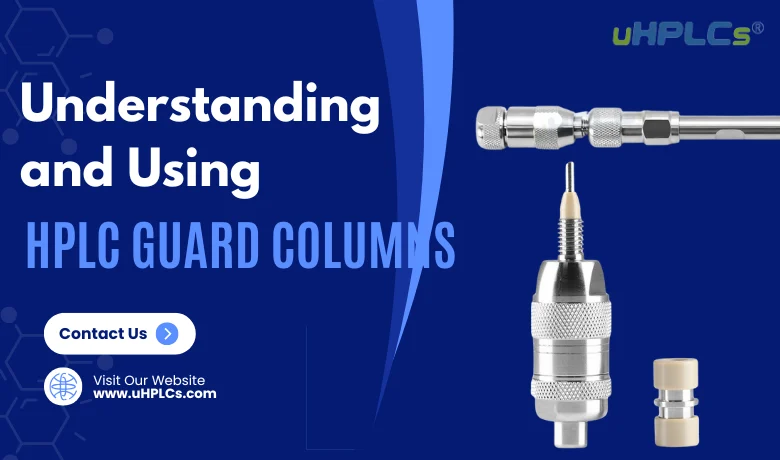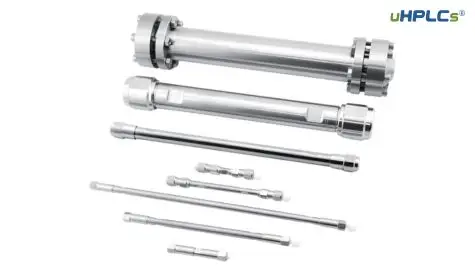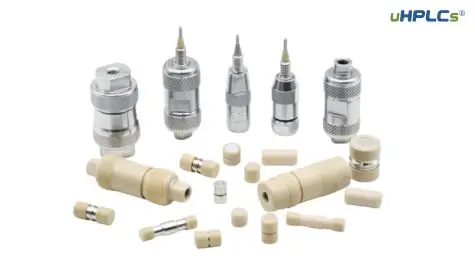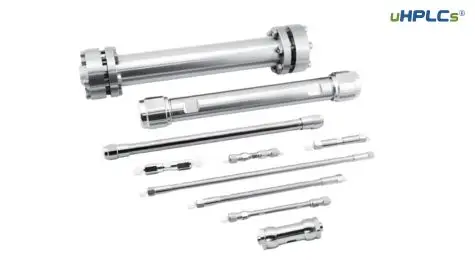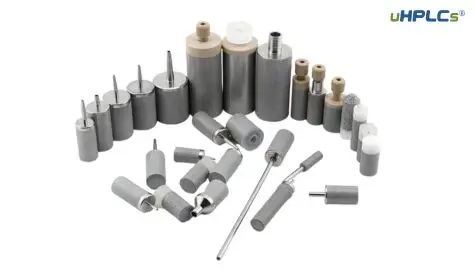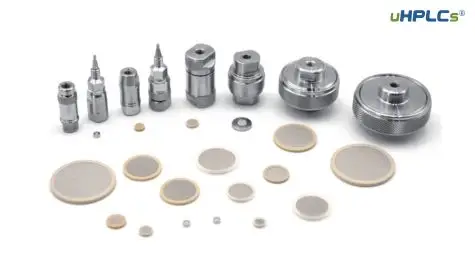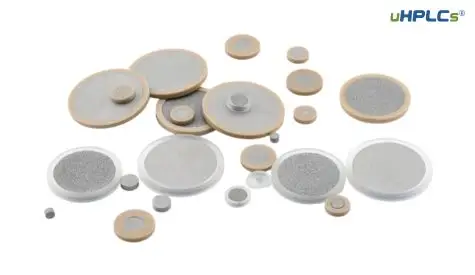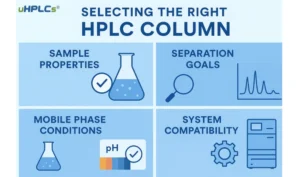Introduction
In the world of liquid chromatography, ensuring the longevity and efficiency of your column is key to maintaining high-quality results and avoiding costly downtime. This is where HPLC guard columns come into play.
Though often overlooked, these simple yet crucial tools provide essential protection for your main analytical columns. In this article, we’ll provide a complete guide to understanding and using HPLC Guard Columns.
What is an HPLC Guard Column?
An HPLC guard column is a small, short column placed between the sample injector and the main analytical column in a liquid chromatography setup. Its primary role is to protect the analytical column by trapping particulate matter, contaminants, and sample matrix components that could potentially damage the main column or interfere with the chromatographic analysis.
The guard column typically contains the same stationary phase as the main column but is smaller in length and diameter. It acts as a “pre-filter,” removing contaminants before they reach the more expensive and sensitive analytical column, thus extending the life and performance of the main column.
Why Are HPLC Guard Columns Important?
1. Prolonging Column Life
-One of the main reasons for using guard columns is to prolong the life of your analytical column.
-Without a guard column, particles, salts, and contaminants can build up inside the analytical column, potentially leading to column blockage or irreversible damage.
-Guard columns act as a buffer, capturing these impurities before they reach the main column.
2.Improving Results Consistency
By preventing contamination from reaching the analytical column, guard columns ensure that the column’s performance remains consistent over time. This helps to maintain reproducibility and reliability in your chromatographic results.
3.Preventing Expensive Downtime
-Columns can be expensive, especially high-performance ones used in complex applications.
-Guard columns are an economical solution to avoid the frequent replacement of costly analytical columns, reducing operational downtime and saving money.
4.Protecting Column Chemistry
-Many samples, particularly biological or environmental ones, contain substances that can alter the chemistry of the column over time.
-Guard columns capture these interfering compounds, ensuring that the main column’s stationary phase remains unaffected and its separation capabilities are preserved.
Types of HPLC Guard Column
Guard columns come in different forms depending on the application, column configuration, and desired protection level. Here are the main types:
1. Pre-packed Guard Columns
These guard columns are pre-assembled and ready to use out of the box. The packing material is already inside, making them quick and convenient to install.
Advantages:
*Convenient and easy to use.
*Less time-consuming since there’s no need to pack the column yourself.
*Consistent and reliable packing.
*Common Applications: Ideal for general-purpose use in laboratories with standard HPLC applications.
2. Cartridges Guard Column
Guard cartridges are a type of guard column that consists of a replaceable cartridge with a specific packing material. They are used with special holder systems and can be swapped out easily when needed.
Advantages:
*Cost-effective: Only the cartridge needs to be replaced when it’s worn out.
*Customizable: Can be used with various column types and systems.
*Versatile: Suitable for different types of chromatography (e.g., reversed-phase, normal-phase).
*Common Applications: Suitable for both small-scale and large-scale analytical testing, particularly in industrial or high-throughput environments.

Guard columns can also be categorized based on their connection method: Direct Connection and Rotatable Connection.
1. Direct Connection Guard Columns
In a direct connection guard column system, the guard column is directly attached to the main HPLC column. The guard column is installed at the beginning of the column, in line with the main column, and is connected securely using standard fittings.
Advantages:
-Simple and reliable: With no moving parts, these systems are more stable and easy to set up.
-Stable performance: There’s less risk of leaks or misalignment because of the fixed connection.
-Space-saving: These guard columns usually take up less space in the HPLC system, making them suitable for smaller setups.
Common Applications:
Routine analytical work: Ideal for everyday testing where the main column does not need to be disconnected frequently.
High-throughput environments: Where minimal changes to the system are needed and high efficiency is essential.
2. Rotatable Guard Columns
A rotatable guard column is connected in such a way that it can be rotated or adjusted for optimal alignment with the main column. This often involves using a rotating joint or a special connector, allowing the guard column to be moved or repositioned as needed.
Advantages:
-Flexibility: These systems allow for easy alignment or adjustment without disassembling the entire column setup.
-Protection during column replacement: Rotatable columns are particularly helpful when frequent replacement or maintenance of the main column is required, as they allow users to rotate the guard column out of the way for easy access to the main column.
-Improved longevity: By rotating the guard column, you can distribute wear evenly, extending its lifespan.
Common Applications:
-Flexible lab environments: Suitable for laboratories where frequent column changes are performed or where space needs to be optimized.
-Customizable setups: Useful when different configurations of columns are required based on specific experiments or tests.
*If you’re looking for a reliable and efficient way to protect your HPLC column, we offer both Direct Connection and Rotatable Guard Columns to meet your specific needs.
uHPLCs Direct Connection Guard Columns provide a simple, stable, and space-saving solution. With no moving parts, these columns ensure reliable performance and are ideal for routine analytical work or high-throughput environments where minimal system changes are needed. Their easy setup and secure attachment make them a go-to choice for labs that require stable and consistent results.
For labs that need more flexibility, our Rotatable Guard Columns are the perfect choice. These columns offer the ability to rotate and adjust the alignment of the guard column with the main column, making maintenance and replacement easier. By distributing wear evenly, they extend the lifespan of both the guard and main columns, making them ideal for flexible lab environments and customizable setups.
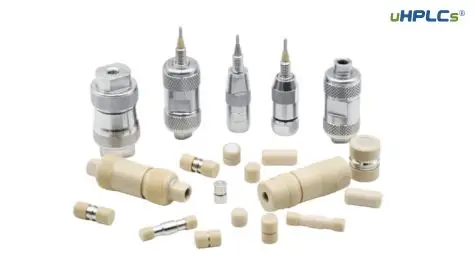
How to Choose the Right Guard Column?
1. Consider the Type of HPLC Column
Matching the Stationary Phase: The guard column should use a stationary phase similar to the main column to ensure consistency in sample analysis. For example, if you’re using a C18 reverse-phase column as the main column, choose a C18 guard column.
Column Type: Whether you’re using a reversed-phase, normal-phase, or ion-exchange column, choose a guard column that complements the main column’s type. This ensures optimal performance and protection.
2. Size and Dimensions
Length and Inner Diameter: Guard columns come in various lengths and inner diameters. Choose a guard column with the same diameter as your main column to maintain consistent flow rates and pressure.
Volume Considerations: Select a guard column that provides an appropriate volume for your application. The typical volume for a guard column is lower than for the main column, but it should still be sufficient to effectively capture impurities.
3. Material Compatibility
Column Material: Guard columns are typically made from stainless steel or PEEK (Polyether Ether Ketone). Stainless steel columns are durable and suitable for a wide range of solvents and temperatures. PEEK columns, while more chemically resistant, are typically used for less aggressive solvents.
Solvent Compatibility: Ensure the guard column’s material is compatible with the solvents you plan to use. Some materials may degrade in certain solvents or at high temperatures.
4. Type of Protection
Particulate Protection: Some guard columns are designed specifically to protect against particulate matter and other solids that may clog the main column. If you’re working with samples that are prone to clogging, look for guard columns with filters or particulate-specific designs.
Chemical Protection: If your analysis involves harsh chemicals or solvents that could degrade the stationary phase of your main column, consider guard columns that offer chemical resistance.
5. Connection and Mounting
Guard Column Fittings: Ensure that the guard column fits securely to your system. Some systems use standard threaded fittings, while others may use quick-connect or other proprietary fittings. Always verify that the guard column’s connection type is compatible with your HPLC system.
Ease of Installation: Choose a guard column that is easy to install and replace. Cartridge-style guard columns, for example, allow for quick and simple replacement without the need to handle packing materials.
How to Use an HPLC Guard Column
Installation
Installing a guard column is relatively straightforward. The guard column is typically attached directly to the column holder or placed inline between the injector and the main column using a guard column holder. It’s essential to ensure that there are no leaks in the system to maintain proper pressure and flow rates.
Maintenance
Guard columns require periodic replacement or cleaning, depending on the type of samples and the contaminants they capture. Some guard columns are designed to be replaced easily, while others can be regenerated by flushing with solvents. Regular monitoring of the guard column’s condition ensures optimal protection for the main column.
Replacement
It’s crucial to replace the guard column when it becomes saturated with contaminants or when it shows signs of reduced performance, such as loss of resolution or increased baseline noise. Depending on the volume and type of samples analyzed, this could range from weeks to months.
Conclusion
Guard columns are a vital yet often underappreciated component of liquid chromatography setups. They provide an efficient, cost-effective way to protect valuable analytical columns, ensuring high performance, longer life, and consistent results. By understanding how to choose, install, and maintain guard columns, you can optimize your HPLC system and minimize operational disruptions.
For more information on HPLC columns or guard columns tailored to your specific needs, feel free to reach out at sales@uhplcs.com. Our expert team is always ready to guide you toward the best chromatography solutions for your lab.

